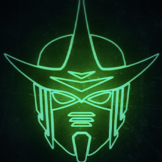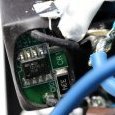Leaderboard
Popular Content
Showing content with the highest reputation on 01/14/22 in all areas
-
That's it! I thought that I only needed to change the port, but you have to delete the whole line and then add it again. I assumed that deleting the entry meant that I had to delete the port that was already there and just put another port in there. Both servers now show up in LAN. Not online. I will try a few things and see if I can get it working. Most likely something wrong with the ports. I also can't connect to the modded server because it keeps telling me that it is a different version, but I had the same issues in the VM. I will ask for help again if I can't get it working.3 points
-
https://www.youtube.com/watch?v=LRfhSmwS3zs I recently interviewed Ed from the YouTube channel Space Invader One. While we discussed Ed's background and his channel, the focus of the interview is on the main topic Ed covers: Instructional videos about the software UnRAID that allows you to turn any PC into a Network Attached Storage, or "NAS" device. While at first, that might seem like something only IT people would use for backups, the retro gaming world is on the cusp of adopting NAS methods for rom storage and streaming - We're not quite there yet, but if you'd like to get ahead of the curve, definitely check this video out and start experimenting with an old PC and an old set of hard drives. (RetroRGB)2 points
-
EDIT: As of 2023-02-26 few years active use this solution is confidently stable. Not a single stale and no problems encountered. The Issue and cause When SMB share is mounted to Linux you sometimes might encounter mount hanging and you get error stale file handle. Something in terms of: cannot access '/mnt/sharename': Stale file handle This is caused by file being stored into cache and then moved into another disk by the Mover. The file inode changes and client gets confused because of it. I suspect it could also happen when file moves from another disk inside array, but have not confirmed that and it would be fairly rare issue. Solutions gathered (only one required) Disabling the cache or mover are ways to solve this. However not very practical for many people as it takes away a feature. Disabling hardlinks also fix this problem from occuring. However it also disables hardlinks from whole system. Generally this isn't huge problem. Only certain apps require it and still kind of work with it disabled. Change SMB version to 1.0 at client side. This has some problems as well, such as exposing server to security problems coming with the 1.0 version. It also has some performance problems and lack of features compared to v3. Now for PROPER fix. Key is to add noserverino to mount flags. This forces client to generate its own inode codes rather than using server one. So far I have not noticed any problems by doing this. I can not replicate the issue with this method and I have hardlinks enabled (not required) and SMB v1 disabled (not required). How to replicate the issue Create a file to share that has cache enabled (not prefered). Browse into that directory inside the mount using /mnt/user path Enable the mover Witness the stale file handle error Ramblings Also I found many different variations for the full mount flags and here is what I use: //192.168.1.20/sharename /mnt/sharename cifs rw,_netdev,noserverino,uid=MYLOCALUSERNAME,gid=users,credentials=/etc/samba/credentials/MYLOCALUSERNAME,file_mode=0666,dir_mode=0777 0 0 Let's go thru the mount flags. I'm using these knowing that posix extensions are DISABLED. With them enabled, you might want to use different flags, especially about permissions. Feel free to change them as you like, the noserverino is the ONLY required one. rw - This is just in case and it enabled read/write access to mount. Might be default anyway. _netdev - Makes the system consider this as network device and it actually waits for networking to be enabled before mounting. noserverino - Client generated inodes (required for the fix) uid/gid - These are optional. It makes the mount appear as like its owned by certain uid. Inside the server nothing changes. I'm using these because files are owned by the nobody/users and I can't open files. There is also noperm flag etc. you could use. I just find uid and gid most practical. credentials - This is a file containing username and password for the share. This is just so that people can't see my password by reading /etc/fstab. For more reference how to set this up https://wiki.archlinux.org/index.php/samba#Storing_share_passwords file_mode/dir_mode - These are optional. These make files appear in share as 0666 and 0777 permissions, it does not actually change permissions at server side. Without these the file permissions are not "in sync" and appear wrong in the client side. Such as 0755 directory permissions while it is 0777 in server. Posix/Linux/Unix extensions (not related to stale file handle) Problem I have not been able to solve is how to enable Posix/Linux/Unix extensions. When I try to enable the extensions it errors out saying that server does not support them. Inside samba config in unraid there is unix extensions = No. However turning this Yes in many ways did not enable them. Why this matters? Well those extensions enable certain nice features that makes the share appear as proper linux drive. To confirm that unix extensions are not enabled: mount | grep "//" in the flags you see nounix flag. To enable unix extensions manually add unix to flags. However during mount you get an error and reading dmesg shows you that it reports server not supporting unix extensions. NFS For NFS I still have no real solution other than disabling hardlinks.1 point
-
I am selling my backup server with the following components: Fractal Node 304 Mini-ITX case (black) with room for 6 HDDs/SSDs ASRock Rack E3C226D2I Mini-ITX motherboard with 6 SATA ports and IPMI for remote/headless management Silverstone ST45SF 450 Watt SFX PSU with adapter bracket Intel i5-4590 CPU with iGPU Stock Intel CPU cooler 16GB (2x8GB) Kingston DDR3 1600 RAM Samsung 830 256GB 2.5" SATA SSD Bonus: 6 SATA III cables including 5 short (8") cables I bought just to reduce cable clutter in the case Bonus 2: 1 Molex to 4x SATA power cable. I used this to power 3 drives and the 3 connector SATA power cable from the PSU for the other 3 No hard drives are included due to weight and shipping concerns. I will continue to use them as backups. This would be a great system to start your unRAID journey or as a backup server for your main server and a fallback if you have issues with main server. This server was powered on once a week via a User Scripts cron job and IPMItools to backup new/changed files and then powered off the same way to await the next week's backup. It has been powered on less than an hour a week on average. Usually, it is a matter of 15 minutes or less. I have researched prices on each of these components and have gone with a low price on each of them. The $495 price includes up to $60 in shipping cost within the Continental U.S. If the shipping to your location will be significantly more than $60, we can negotiate an additional shipping charge. I can accept several forms of electronic payment including Venmo, Square Cash and PayPal.1 point
-
Hi, I'm expecting to receive the last bits for a new server next week, and will be setting up my first unraid NAS, replacing an old Synology that (literally) has a paperclip stuck in the ATX power plug, and duct tape on the inside keeping things together.. considering all the hours I spend keeping it alive, it will be an emotional last data-transfer.... One thing I would like to get ready is my firewall setup. The vlan where the unraid will reside is filtered on both inbound and outbound traffic, so I will need to setup access lists to anything the server needs to connect to. Does anyone know the IP/Addresses that Unraid needs to connect to? - OS updates - License check during trial period Community Applications needs git I can see, I'll handle that in case I need to install any, haven't made up my mind yet. Anything else where Unraid makes use of internet?1 point
-
www gave the 98.1xx.x.x IP. I ended up just doing a full wipe. Issue resolved. Not sure what caused it. Also I normally don't use 443, I changed the port around during testing. That was the port I was using during the time I took the screenshots to check defaults just to be sure.1 point
-
1 point
-
Hey team, Huge thanks to @ich777 for adding the uinput module to his list of plugins that he maintains (currently pending being added to CA). This has fixed controller support for this container on Unraid. I have updated the Unraid Docker template for this container. If you want to enable controller support with your Steam Remote Play, then, remove the container from your docker tab and then head back over to CA and re-install it. The template now has under the advanced section the ability to toggle the audio for the web interface on/off as well as a "Mode" configuration (mode is currently in testing and is not usable). Later on today / tomorrow I will update the initial post with instructions on installing that include the required uinput plugin1 point
-
Meinen Senf zur Antwort von Asrock: Mein 9100 hat auf dem Board C8 Package gemacht, somit ist die Aussage mit dem C7 definitiv falsch. Zu „Kauf ein C246M-WU4 in UK: Hab ich kurz nach Weihnachten bestellt, vorgestern gekommen. Hat gedauert, aber tatsächlich eines erhalten. @mgutt ist tatsächlich nochmal 3 Watt sparsamer, obwohl das Teil 2 SATA Ports mehr hat1 point
-
@jonp I’m tagging LimeTech on this. They may not even be aware. The manual method should still work though.1 point
-
I just tested a few more things. The non modded server is online and can be played on. The modded one only works when I disable the mods and rename the mod folder. Just disableing the mods in the server.config does not work since Wreckfest keeps telling me that there are still mods active. Could it be that mods are not working because the container is in beta? Here is a screenshot that shows where the mod folder is placed, how it is named, that mods are turned off in the server.config and that the game still says that the server has active mods; Turning on the mods in the server.config and trying to connect; Both the mods folder and server.config are copied from the VM that hosted the servers before. I know this combination works.1 point
-
Bonsoir, merci pour votre retour... Très bonne explication ! Vous avez répondu à ma demande J'attendrai un second array mais merci beaucoup pour vos infos1 point
-
Not sure why you did a new config, that's not used to rebuild drives, starting the array in maintenance mode won't auto-start the rebuild but you could click on "sync" or just start in normal mode, for the encryption key you'd need to use the existing one. Now, and if parity is still valid you can do this (I never used encryption so not sure when it will ask for the key, but when it does use the old one): -You already did a new config so we continue after that -Check all assignments and assign any missing disk(s) if needed, including the new disk you want to rebuild, replacement disk should be same size or larger than the old one -IMPORTANT - Check both "parity is already valid" and "maintenance mode" and start the array (note that the GUI will still show that data on parity disk(s) will be overwritten, this is normal as it doesn't account for the checkbox, but it won't be as long as it's checked) -Stop array -Unassign the disk you want to rebuild -Start array (in normal mode now), ideally the emulated disk will now mount and contents look correct, if it doesn't you should run a filesystem check on the emulated disk -If the emulated disk mounts and contents look correct stop the array -Re-assign the disk to rebuild and start array to begin.1 point
-
Ja und langsam habe ich das Gefühl das Gigabyte wird eine Wertanlage. Ich frage mich echt wie ignorant die Hersteller hier eigentlich sein können. Mag ja sein, dass C246 jetzt alt ist. Aber warum dann kein W580M. Da läuft ja die 10te Generation auch drauf. Supermicro hat zb ein ATX Board, wo ich mich frage wer sich so einen Schwachsinn eigentlich ausdenkt: https://www.supermicro.com/zh_cn/products/motherboard/X12SAE-5 Die verbauen immer noch dieses uralte PCI, dann fehlt ein X4 Slot und dann wurden einfach grundlos zwei SATA Buchsen weggelassen. Ach ja... 350 € 😂1 point
-
I think that when you change the UDP port you have to delete the entry and make a new UDP port with the new port number.1 point
-
Both fine, end up also rebuild parity2 with replacement disk.1 point
-
Thank you for the kind words The connection that allows the dashboard to show how many apps are installed/started, vms created/running, etc has gone offline. You can bring it online by opening a webterminal and typing: unraid-api restart We are readying a new release that will hopefully resolve this. I don't have anything to announce regarding encrypted flash backup.1 point
-
1 point
-
Stop Array, unassign parity2, restart array to commit change. Your steps would leave Unraid complaining about a missing parity2 drive1 point
-
The easiest thing would be to edit the config/network.cfg file on the Unraid flash drive to change the static IP to one in the new range1 point
-
No worries! I'll eventually get it tweaked the way I want it. The 'make it hard' part was me not using my open eye at 0241 in the morning when posting this. Should be a snap now that I look at it.1 point
-
Go to your Docker page -> click on the OpenVPN-Client container -> click "Edit" -> at the bottom click "Add another Path, Port, Variable, Label or Device" -> from the drop down select "Port" -> enter the ports from the container you want to route through at Host and Container port (like it is in the original template for the routed through container) -> click "Add" -> click "Apply". The container that you've routed through should now be reachable again.1 point
-
If you have problems with this, you set the access mode on the mappings to be one of the "slave" modes1 point
-
Ich habe heute schon die Antwort des Supports aus Taiwan erhalten. 😑 Aber naja... Immerhin ist der Server nach den Optimierungen hier im Thread auch so ziemlich sparsam im Verbrauch. Allerdings wünschte ich jetzt doch ein bisschen, ich hätte das Gigabyte C246M WU4 irgendwo ergattern können. Das wären auf lange Sicht zwei SATA Ports mehr und wie wir nun wissen, hat es auch den besseren C-State Support und mehr ASPM fähige Teile. Ein späterer Austausch des Boards lohnt sich nicht wirklich, wenn zum Aufpreis des Gigabyte Boards noch der Wertverlust des ASRock hinzukommt.1 point
-
Soooo... I figured out why DHCP wasn't working on the VLAN on the NAS only (was working elsewhere). At some point, i tagged the port `LAN`. Not `ALL`. I probably did this not long after getting the router, because i couldn't figure out how to secure my VLANs while letting some traffic i wanted through, through. I got that sorted quite a while later - but i didn't remember to flip the port back to `ALL`, i forgot all about it. It just popped into my head a short while ago. Tested it - all good. Spent SO long on this. LOL. CRY. Not sure how to mark as "solved".1 point
-
1 point
-
1 point
-
Zur Info: Die funktionieren nicht auf einem C246 Board. Rechne beim Hochfahren mit 30W pro HDD und 50W für das restliche System (sofern keine Grafikkarte verbaut ist). Das sollte passen. Naja was heißt Qualität. Selbst das billigste Biostar geht nicht in Flammen auf und selbst das teuerste Asus kann in Flammen aufgehen ^^ Also im Ernst. Welche PC Komponenten gehen schon regelmäßig kaputt.1 point
-
No, just speaking generally from educated guesses. Probably I can test it within the VM... but then it would be a disk image instead of a real SSD. And before I buy another sata ssd I will go and grab another 64G consumer RAM 😉 Next I'll figure out if the performance "native" on unraid (I mean with the great community plugins) is the same as on the TrueNAS VM... or I hope even higher because of no virtio needed in between. But I don't have time right now... probalby next week.1 point
-
Das geht ja eben nicht. Wenn du die in einem X8 Slot steckst, wird von der Quad Karte nur ein einziger M.2 Slot gehen. Kannst du den Slot auf X4X4 Bifurcation einstellen, dann würden evtl zwei gehen. In so einem Fall braucht man also eine Non-Bifurcation Quad Karte mit integriertem PCIe Switch. Das sind dann die, die 300 € statt nur 30 € kosten und eben deutlich mehr Strom verbrauchen. Selbst dann wäre mir der Stromverbrauch nicht total unwichtig und der EPYC alleine würde mir für Plex, VMs usw ohne Grafikkarten wenig nützen und schon bist du alleine fürs Board dann bei 70 bis 100W. Was wir brauchen sind "viele" Lanes und eine iGPU. Aber das gibt es ja leider nicht. Interessant für unRAID wäre denke ich diese Karte in einem (offenen) X1 Slot mit zwei 5x SATA M.2 Adapterkarten: https://www.amazon.de/Dual-Adapter-RIITOP-Support-22110/dp/B08P57G1JW Meint ihr das geht? Da blieben dann 100 MB/s pro SATA Buchse bzw wenn nicht auf alle zugegriffen wird, eben die maximale HDD Bandbreite. Wären dann aber auch 200 bis 250 € für gerade mal 10 SATA Buchsen.1 point
-
You should have a strong password, but even more important, you shouldn't put your server on the internet. Setup Wireguard (builtin) or use My Servers to access your server remotely. https://wiki.unraid.net/Manual/Security1 point
-
1 point
-
Yeah I was curious about that. AFAIK public release is still on rc2 but I could be wrong. Either way, I am not sure where to go from here. I don't think it's an app problem so much as it is a generic container problem. I would probably post something in the General Help section and have one of the mods look at the logs. They will have a much better knowledge base than I do. If they do deem it an issue with the app then I will try to engage the dev. I will always try to help in anyway I possibly can. I apologize for you facing this issue and me not being able to resolve it for you.1 point
-
1 point
-
I would make sure you know what ports are currently open and what service is attached to them. Don't open ports for things you don't intend to use/connect to externally. If you're not using RCON you shouldn't have to open port 27020. As an example for the RCON I'm hosting a Left 4 Dead 2 server, but I don't use the RCON externally. If I need to use it I would remote into the Unraid machine and send it RCON commands through the terminal, so the only port that needs to be exposed is the SSH connection to the machine. 27015 is common for steam services and I believe its used to broadcast the connection to the server on steam, but shouldn't break it if it isn't configured right. 7777 looks like the main gameport, so I would start your troubleshooting there. Hopefully my two cents helps more than hurting1 point
-
Lutris is coming... Along with Retroarch. I have been debugging and sorting out the controller issues this week. I have found the solution and am just working on the best way to get that to Unraid users. @ich777 has kindly offered to create a plugin that will add the required kernel modules to Unraid that this container needs to fix the controller issues. Once this is sorted I will publish an updated template in CA that will include all the new container features and a description in the first post of this thread of what needs to be installed.1 point
-
Here some numbers while I'm still testing my ZFS-dedup+iSCSI game library idea and the pool is not yet exported to unraid. Specs: - TrueNAS 12.U7 as VM on unraid with 32G RAM, 2x2TB SATA SSD passthrough (I descided to use some old cheap consumer SSD's) - these 2 disks striped together in a pool, sync off, dedup on (data loss doesn't matter, games can be downloaded again and again...) - 4 game libraries in total (2x800G + 2x200G) fully loaded, each as individual zvol linked via iSCSI to the clients, tested and all is working - 951G allocated disk space for this 2TB data in total (at the moment) - Dedup ratio of 2.16, compression off (I don't get more than 1.01 compression ration on the game libs) - 58mio DDT entries à 300B => around 16-17GB dedup table in RAM needed - 10G network Subjective impressions: Read speed is astonshing for disks over network, game loading times doesn't differ a lot compared with local NVMe SSD's! Write speeds are good as long as the data fit's into the ARC cache... afterwards it drops to 50-100MB/s until the cache is flushed and ready for high speeds 😁. Some benchmarks screenshot and the "10G file copy" test attached (Windows really can't calculate a correct copy time...). And here some game loading time differences in seconds (local gen3 Nvme vs. iSCSI-ZVOL): - MSFS2020 until Menu: 185 vs. 195 (I personally don't understand why this game tooks so long to load also on Nvme!!!) - Battelfield V until Menu: 57 vs 63 - Battlefield level loading: 26 vs 28 - Doom Ethernal until Menu: 46 vs 56 (I hate watching intros and warn text every time 😄) - Doom Ethernal level loading: 6 vs 8 - Cyberpunk 2077 level loading: 6 vs 14 (here I can see the biggest difference) The next step is export this game library ZFS pool to unraid, configure iSCSI on unraid and test again.1 point
-
Just so you don't get disappointed don't expect NVMe speeds for array assigned devices, Unraid isn't built for speed, I did a test some time ago and even without parity a read check was much slower than expected, it's not a bandwidth issue since it was done on am Intel Xeon with plenty of lanes, and all devices are using CPU lanes:1 point
-
Hey, thanks for the active work on this Web-App I would like to understand more on what these variables are doing internally. I have them both set to the local IP address of server. Some more context may be better for understanding. Also, how can I change the title of your page "Docker Web UI" to what I want to? as I keep this tab open all the time and would like to rename to something I can quickly get to. Thanks for the app again. Cheers!1 point
-
Hi folks, if you think you were hitting some false positives with the recent certificate and LocalTLD tests, please update to the latest Fix Common Problems and run the tests again. If it is still flagging issues I'd recommend cleaning them up before moving to 6.10. If you have a custom certificate this tests that the "Subject: CN" of that certificate matches the [servername].[LocalTLD] settings of your server. If you use a custom wildcard cert, it verifies that the "Subject: CN" is *.[LocalTLD] . Unraid does not use the "Subject Alternative Name" fields. See Settings -> Identification to set the [servername] and Settings -> Management Access to set the [LocalTLD] If there are warnings about a "Missing or Wrong DNS Entry for host" that means the server is not able to lookup an IP address for [servername].[LocalTLD] . In other words, if your servername is "Tower" and you specify the LocalTLD as "mydomain.com" then this tests that Unraid is able to do a DNS lookup for "Tower.mydomain.com". The point of this is to catch errors where people have provided an invalid LocalTLD. (i.e. don't add your ISP's domain name to the LocalTLD, unless Tower.myispsdomain.com actually resolves to the server's IP) (There is a corner case where you might have Unraid setup to use a different DNS server than the rest of your network. In this case, as long as the rest of the network is able to resolve the server's IP, it should be ok to ignore the test.) If you get warnings about having a blank LocalTLD, you should either set that to "local" or an actual domain name. This will help with any SMB connections that rely on MDNS (including Windows 11) regardless of the version of Unraid that you are running. Need clarification on something? Feel free to ask if the above does not cover it1 point
-
New Release planned for this weekend. It will include HUB processing Will report use of a device outside of USB Manager. Shows if the device is a Bluetooth controller. Looking to see if adding Pairing/Firmware updates could be added, Maybe as a tab for BT. Connected(Outside) - Device is attached via VM Template or Manual connection to VM. Inuse Mounted - Device has been mounted, i.e. with UD Inuse ZFS - Device is being used within a ZFS Array. Inuse Unraid - Device is being used in a Pool etc. Dashboard wll be updated to match new status and hub processing. Looking to create a How to Guide, but may not be complete this weekend. Please let me know any Future additions people would like.1 point
-
Yes, I'm just in the process of getting API access to Curse, that should help.1 point
-
I installed the "neofetch" application using the Nerd pack but was bummed to see that Unraid wasn't supported as a detectable OS. I couldn't find one anywhere else, so I created my own: To replicate this you simply need to do the following: Install Nerd Pack from CA Appstore Install "neofetch" package Copy the attached "config.conf" and "unraid_ascii.txt" to ~/.config/neofetch If you want this to display automatically at login, add the line "neofetch" to the bottom of ~/.bash_profile unraid_ascii.txt config.conf1 point
-
Noch eine kleine Ergänzung zur CyberPower USV: Wenn man möchte, dass bei beim Netzausfall der Server runterfährt und bei Netzwiederkehr hochfährt muss man folgendes machen: -Statt dem UPS Dienst (welcher in Unraid schon installiert ist), muss man das NUT Plugin nutzen und "Turn off UPS after shutdown:" auf "Yes" setzten. -Im Bios den Server so konfigurieren, dass bei Netzspannung immer "Power on" ist. Warum NUT satt UPS? -Wenn man "Turn off UPS after shutdown:" vom UPS Dienst nutzt fährt die USV erst 60 Minuten runter, nachdem der Server runterfahren wurde. Wenn innerhalb der 60 Minuten das Netzt aber zurück kommt, bleiben alle Ausgänge weiterhin unter Spannung und der Server bleibt immer aus. Die BIOS Funktion "Power on" bei "Netzspannung" funktioniert nur bei einer Flanke von 0 auf 1.1 point
-
cool deal, hope all goes well. i'll keep an eye on the user script forum, and see what others have to say as well. feel free to reach back out with anything else. cheers!1 point
-
OK many thanks will ask for some help over in the other forum. Main thing is that it's backed up. I'm going to be moving my plex folder to a new nvme drive tomorrow on unassigned devices so hopefully go ok. Thanks again and please keep up good work on you tube considering becoming a patreon1 point
-
1 point
-
the user scripts logs don't persist after a reboot, so that's ok. i was about to suggest taking this over to the user script forum, but it look's like you're already there. i think a better post there would be to ask about why the bottom lines in the script aren't working on your server. they're basic linux commands, and the syntax works perfectly for me on my servers so after our troubleshooting i'm stumped as to why they're not working for you. when you make your post there, you can link to this topic for context to users that may be able to help. you may also want to post your script and logs there directly, too. i'll be following and keeping up with what's going on.1 point
-
It used to be there, find it here now: Settings > Management Access > Local TLD1 point
-
Change it to "Use cache=Yes" then run the mover. Then set it to "No". There's a good explanation of the options here: https://lime-technology.com/forum/index.php?topic=54683.msg522714#msg5227141 point























.thumb.jpg.d74871f2737d625ddd6091e019824d83.jpg)





